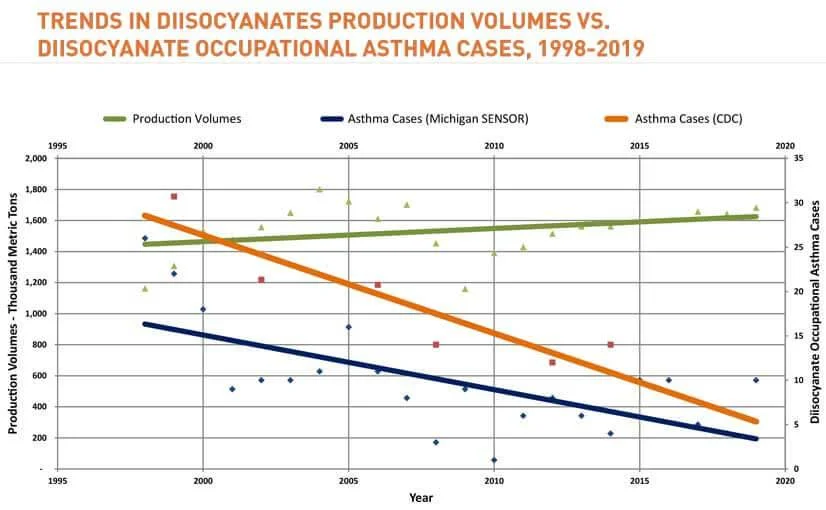Diisocyanates are among chemicals known to cause asthma in the workplace, however the incidence of diisocyanate-related asthma has been decreasing. Despite the fact that diisocyanates do not rank as the leading cause, nor in the top 10 leading causes, of occupational asthma, some articles continue to reference old data. Recent data show a consistent picture of a decline in asthma rates associated with diisocyanates over the last decade even as production rates of diisocyanates have increased. The reduction in diisocyanate-related occupational asthma is primarily due to a variety of industry product stewardship activities, including education and training, enhanced worker awareness, improved work practices, use of less volatile diisocyanate forms (e.g. pre-polymers), improved engineering controls (e.g., containment and/or ventilation) better medical surveillance programs, minimization of peak exposures, and continuing emphasis on compliance with existing exposure standards. These product stewardship efforts are key to further reductions in cases.
According to the NIOSH Work-Related Lung Disease Surveillance System (eWoRLD), in the four U.S. states surveyed (California, Massachusetts, Michigan, and New York) the most recent work-related asthma statistics from 2009-2014 indicate that diisocyanates are not in the top ten categories nor the top 20 exposure agents (less than 1.0% of work-related asthma cases).
Other national data collection programs on worker exposure and disease incidence reinforce these findings, showing a reduction of diisocyanate-related occupational asthma cases over the last decade in Finland, Ontario, Belgium, France, and the United Kingdom, even as production and use of diisocyanates increase around the world.
